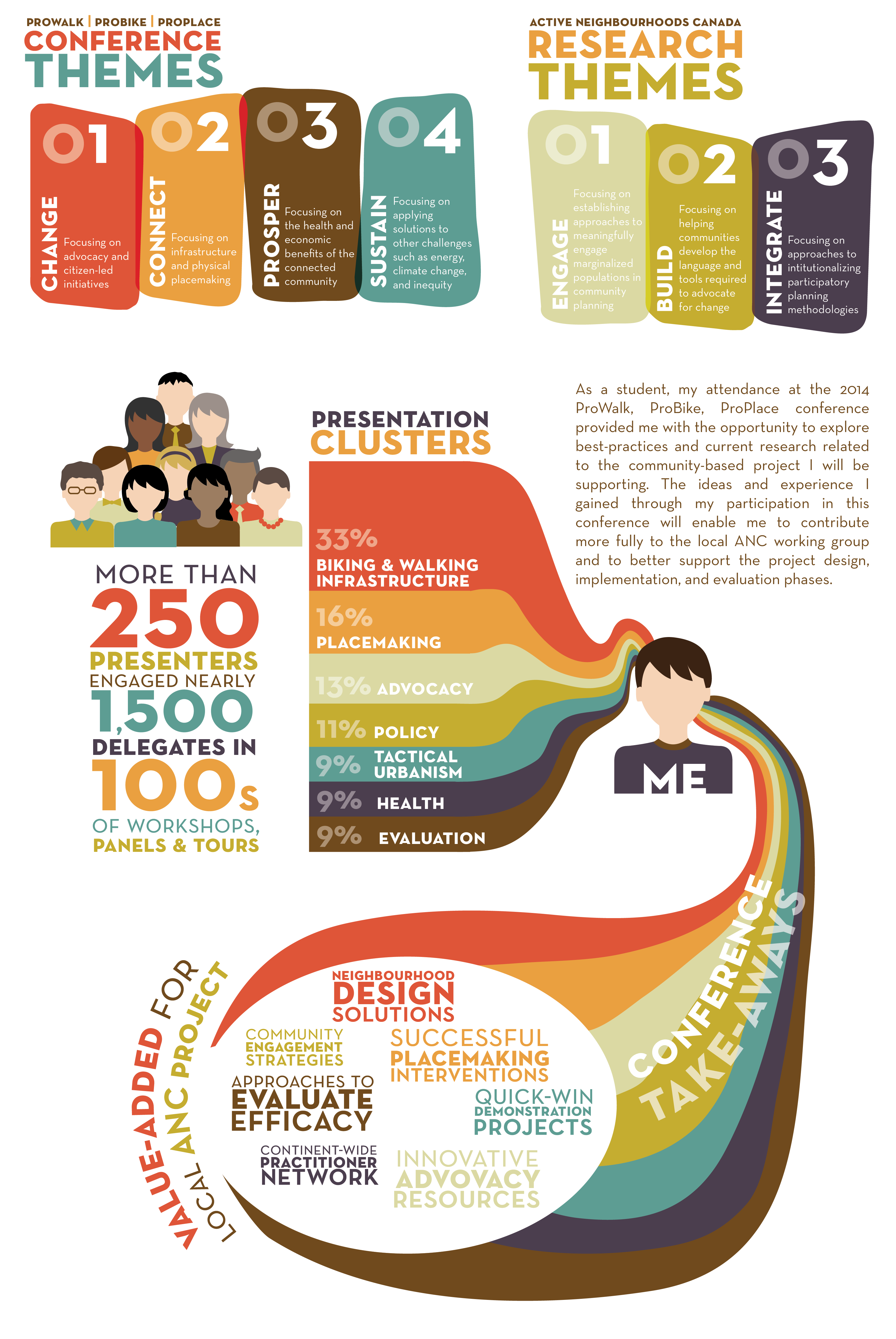My name is Tessa Nasca and I am a Masters of Sustainability Studies student at Trent University. Through the Sustainability Studies program and the Trent Centre for Community Based Education, I will be engaging in a participatory urban planning project called Active Neighbourhoods Canada [ANC]. The ANC project (a part of CFICE Community Environmental Sustainability Hub) seeks to involve community members in reimaging their public spaces, namely streets and sidewalks, and envisions how we can better share this public space between pedestrians, cyclists, and motor vehicle drivers. By giving the community ownership over processes of urban planning and community design, the ANC project hopes to demonstrate how streets and sidewalks can become vibrant and enlivened public spaces that encourage community members to choose active transportation.
As I undertake my research and engagement with the ANC project, it is important to a have strong understanding of best practices and current research in the active transportation field. Through the support of the CFICE Knowledge Mobilization Hub, I was able to attend the 2014 ProWalk, ProBike, ProPlace conference. ProWalk, ProBike, ProPlace is one of the largest international conferences in active transportation and urban placemaking, brining together nearly 1,500 professionals, academics, and community practitioners to discuss how we can build lively, healthy, and prosperous communities through the creation of viable active transportation systems.
While the ANC project was too early in its development for me to present on project results, my attendance at ProWalk, ProBike, ProPlace provided me with the opportunity to explore best practices and current research related to the ANC project. Presentations at the conference addressed a broad spectrum of elements necessary to build active transportation friendly communities, from technical design elements, policy and advocacy initiatives, evaluation and benchmarking, community engagement strategies, to citizen-led do-it-yourself urban interventions. My exposure to each of these elements will enable me to contribute more fully to the local ANC working group and to better support the project design, implementation, and evaluation phases.
Although ProWalk ProBike ProPlace introduced me to a breadth of approaches to building active transportation friendly communities, the new concept that most excited me was the use of tactical urbanism in encouraging active transportation use. Tactical urbanism is an emergent trend in urban placemaking aimed towards creating short-term, inexpensive, and easily implementable interventions to temporarily transform public spaces. Examples of tactical urbanism projects could include: transforming parking spaces to parklets for a day, creating a pop-up bicycle lane, animating a street with a participatory art installation, or temporarily closing a residential street to create a play street. Tactical urbanism can be a powerful tool for community engagement because it involves projects that are accessible, flexible, and easily implementable. By giving community members the opportunity to temporarily shape their public spaces, tactical urbanism can inspire the community to imagine more vibrant public spaces, and to choose to work for more permanent change.
As the community working group meets to discuss the early stages of the ANC project, the idea of using tactical urbanism to engage community has already sparked an interest. We have discussed creating a series of play streets in the neighbourhood, engaging the arts community enlivening the public park, and creating pop-up cycling infrastructure along the neighborhood’s most heavily trafficked cycling corridor. I am hopeful that some of these short-term interventions will inspire the community to work towards more permanent changes to their community design.
Overall, the ideas and experience I gained through my participation in ProWalk ProBike ProPlace will provide added value to the local ANC project. My attendance at this conference exposed me the spectrum elements necessary in designing, building, and evaluating active transportation friendly communities, and this foundation has provided me with increased capacity to meaningfully engage with the ANC project.